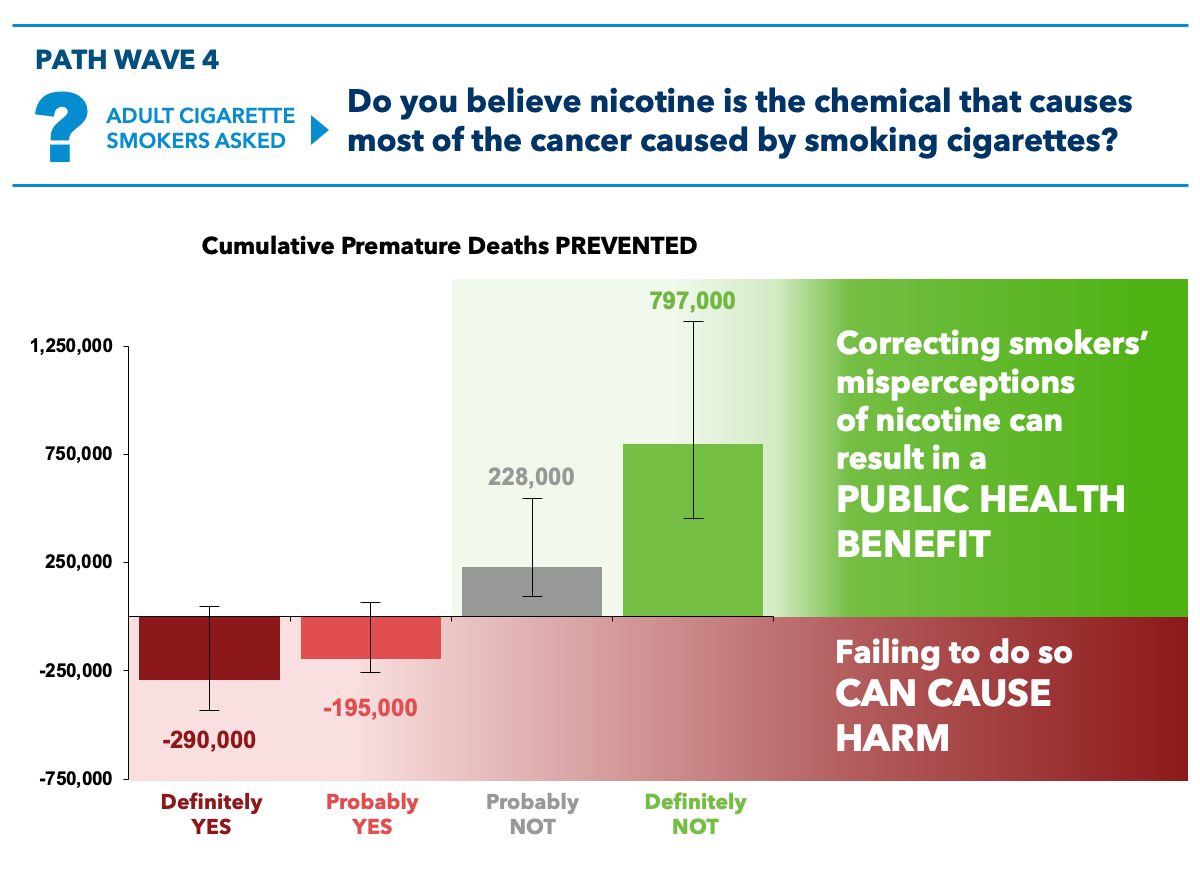Correcting Misperceptions

Consumers need – and are entitled to – truthful and accurate information to make informed decisions. We believe this should include the millions of adults who smoke in the U.S., many of whom are seeking reduced-risk alternatives to combustible cigarettes.1
Unfortunately, misperceptions about nicotine and the relative risks of tobacco products are a major obstacle to harm reduction and transitioning adults who smoke to smoke-free products. We believe the Center for Tobacco Products (CTP) has an opportunity to develop and deliver targeted communications – aimed at adults who smoke and the health care providers they look to for advice — about the role of nicotine and the relative risks of tobacco products.
While nicotine is not risk-free and is highly addictive, nicotine is not a carcinogen and is not what makes smoking cigarettes harmful. Instead, it’s the exposure to smoke that causes most tobacco-related disease. As the Food and Drug Administration (FDA) states on its website: "Nicotine is what keeps people using tobacco products. However, it’s the thousands of chemicals contained in tobacco and tobacco smoke that make tobacco use so deadly.”2
And while tobacco science generates robust debate, various data sources highlight the existence of misperceptions about nicotine as well as the relative risks of tobacco products. For example:
- Recent studies co-led by Cristine Delnevo, the Director of the Center for Tobacco Studies at Rutgers University and the Chair of TPSAC, found that over 80% of physicians incorrectly believed that nicotine directly contributes to the development of cancer and more than 60% believe all tobacco products to be equally harmful.3,4
- A recent study by Rutgers University found that 88% of adults who smoke believe e-cigarettes are as or more harmful than smoking cigarettes or are unsure about the relative risk.5
- A 2016 study by CTP scientists analyzing data from the Health Information National Trends Survey found that around “three quarters of people either were unsure of the relationship between nicotine and cancer or incorrectly believe that nicotine causes cancer.”6
- Data from Wave 4 of the Population Assessment of Tobacco and Health (PATH) Study found that a majority of adults who smoke believe smoke-free products – e-vapor, smokeless and snus – are about the same or more harmful than smoking cigarettes.7
(Click to enlarge)





